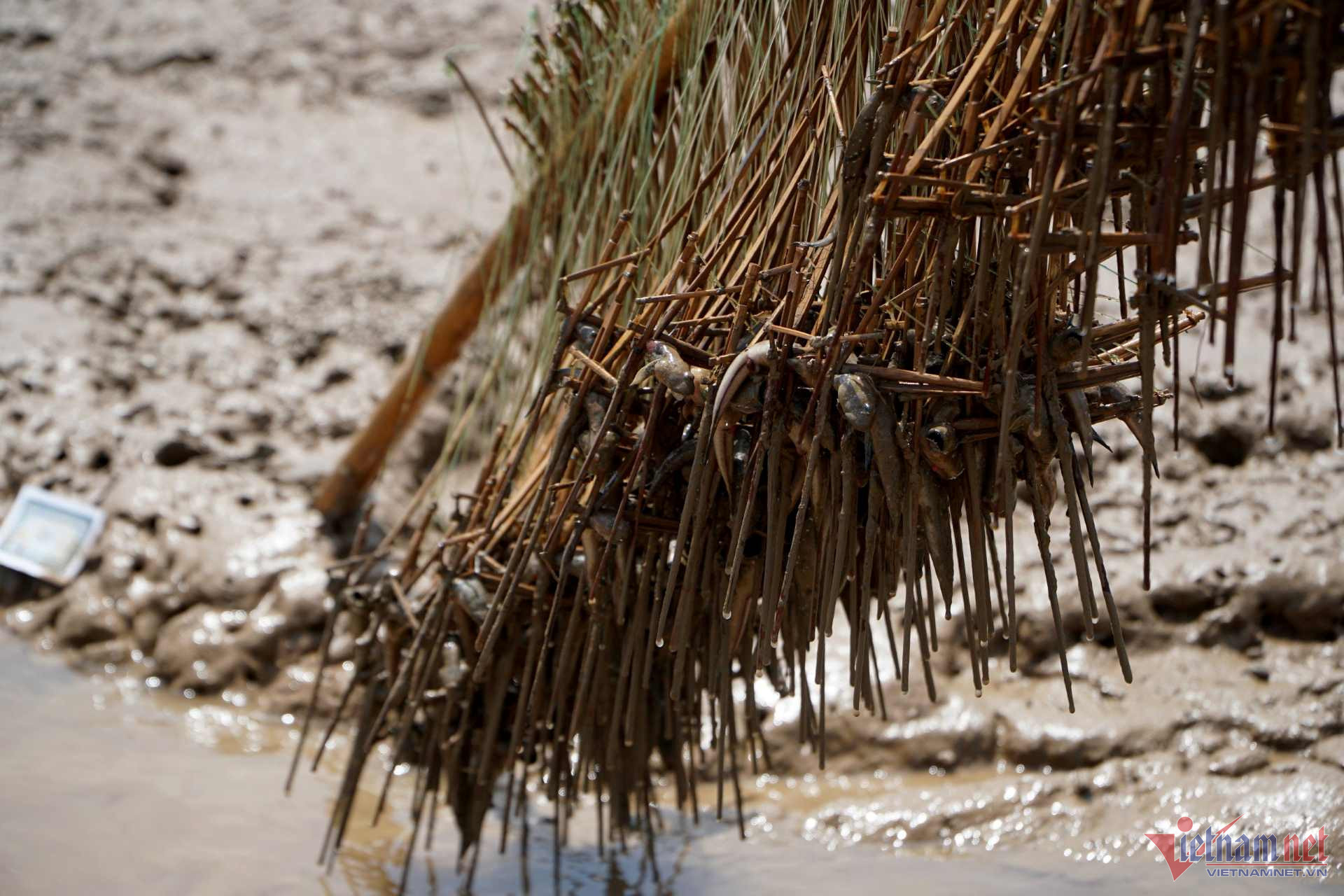
No one remembers when ca coi fishing began. Local people know that every time the tide goes down, they flock to the mudflats in the forests to catch crabs and fish.
The fish is called by people as ‘con ky di’ (odd creature), because it not only can swim, dive and run, but can climb trees to seek food.
Vu Van Do, an experienced fisherman, said previously people did not catch the fish for food. But later, the fish became favored as it is a specialty with high value.
It is difficult to catch the fish. People have to wade through mud about 40-50 centimeters deep. Sometimes they have to wade about 1 kilometer from shore. Since the fish has legs, it can run fast and hide itself from fishermen.
People seek ca coi depending on flood tides. In general, people go fishing 15 days a month. People have to wade through mud for many hours to catch 2-3 kilograms of ca coi which they can sell at VND250,000 per kilogram.
Previously, people could just catch one kilogram of ca coi each day. But they have invented a kind of board on which they can ‘surf’ on mud. The board, 1.6-1.8 meters long, can move at 20 kilometers per hour, and allows them to catch more fish.
Local people said ca coi are ‘clever’, so fishermen need to be agile to catch them. Ca coi is brown and can easily penetrate the mud.
There are two methods to hunt for ca coi. First, people dig a hole with their hands when they discover the fish. The method allows them to catch fish alive and sell at higher prices, but the output is small.
Men use boards to surf on mudflats and catch fish with traps. This method catches more fish, but dead fish sell at lower prices.
The traps are created by local men from bent bamboo stems, each of which is 40 centimeters high. The traps are put at fish holes and when fish rise to seek food, they fall into the trap.
According to Do, the ca coi catching season lasts from just after Tet holiday to the end of the fifth month of the lunar year.
Le Duong